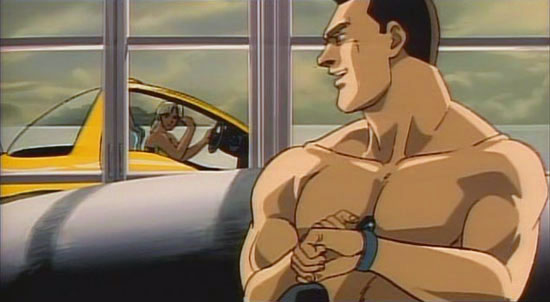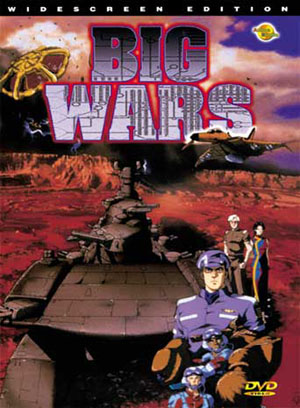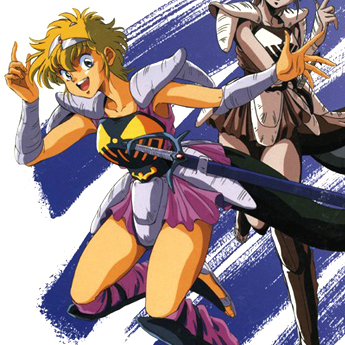

As I write this, my brain rebels at the idea that the year 1993 was nearly twenty years ago. Almost two decades, vanished, never to return. And what do I have to show for it? A shelf of full of DVDs, their plastic cases coated with a patina of dust. Standing proudly amidst those cases, a copy of Big Wars.
Big Wars. What a silly title, and the movie is as silly as the title suggests. In the year 2416, humanity has taken Arnold Schwarzenegger’s advice and got its collective ass to Mars. On this new frontier, planetary terraforming is underway, as well as war with the natives, an enigmatic alien race known as the Gods. It’s the classic science fiction set-up: humanity vastly outgunned by the superior technology of a hostile extraterrestrial threat.
H.G. Welles would have been proud, except that two minutes into the film I’m gawking at what appears to be a pitched battle between a fleet of flying saucers and a land-locked submarine.
Another two minutes pass and my suspicions are confirmed: I learn that our square-jawed protagonist, Kanki Akuh, is a captain in the Ground Navy. Because even though Mars doesn’t have any oceans (yet), that’s not going to stop humanity from building armored dreadnoughts and amphibious battleships and sailing them all over the crater-pocked surface of the Red Planet. After his ship, the Aoba, is scuttled in battle, Akuh finds himself reassigned to a top-secret mission. The Ground Navy rebuilds the Aoba in secret, making it stronger, faster, better than before. With an upgraded ship and a fresh crew, Captain Akuh must find and destroy the elusive alien mother ship known as Hell. It’s a suicide mission; no ship has ever challenged Hell and survived.
The plot thickens when military intelligence officer Lieutenant Darsa Keligan, Captain Akuh’s sometime girlfriend, begins behaving strangely. Has Darsa been targeted by the Gods for mental infiltration? She’s certainly displaying all the symptoms…
Actually, there’s only one symptom: an insatiable craving for boozy, drug-addled sex. I don’t know if that’s really an early warning signal for alien mind-control, or just a side effect from the fact that terraforming a hostile planet while beset from all sides by lightning-spraying flying saucers is a terrible way to live.

It’s impossible to watch Big Wars and not come away with the feeling that through it the animators address Japan’s defeat during World War II. Other films about the heroic exploits of marvelous naval vessels, from Space Battleship Yamato to Atragon, strike a similar chord. It’s as if these films wish to say: “In the past, the battleship couldn’t survive when warfare took to the skies on wings of steel. But in the future, ah! The battleship will once again reign supreme!” Big Wars is essentially a Pacific theater naval clash transplanted to a futuristic setting. Laser cannons and fusion bombs substitute for torpedoes and depth charges. UFOs stand in for fighter planes. It’s the animated equivalent of those old war films filled with spectacle and jingoism.
Big Wars is also an interesting study in how the Japanese tradition of limited animation—a practice initiated for economic reasons—translates to the big screen. Plenty of scenes in Big Wars are faking it, and I’m not talking about Lieutenant Darsa Keligan’s enthusiastic lovemaking. No, I’m referring to creating the illusion of motion by panning the camera or dragging the animation cel. Big Wars does a lot of this, but it’s not as obvious as you would expect.
This is partly because the character designs by Satomi Mikiyura are intricate and distinct. They strive for realism in depicting people of varying ethnicities and physiognomies, more so than what we typically expect from Japanese animation, which even today is stereotyped as the medium of saucer eyes and spiky hair. These character designs, which include ugly and ordinary people as well as beautiful ones, are a breath of fresh air.
The mechanical designs by Hiroshi Yokoyama also help. Although the idea of a terrestrial submarine is intrinsically silly, at least the ships in question have a plausible shape.  Their interiors are cramped and functional, the sort of no nonsense design you’d expect from a military hard-pressed to keep their war-machines on the front lines. It’s a good thing, too; seeing some of these machines in motion can be a trying task, especially during the scenes where the budget was spread thin and only the strength of the designs can keep the viewer in the moment.
Their interiors are cramped and functional, the sort of no nonsense design you’d expect from a military hard-pressed to keep their war-machines on the front lines. It’s a good thing, too; seeing some of these machines in motion can be a trying task, especially during the scenes where the budget was spread thin and only the strength of the designs can keep the viewer in the moment.
Big Wars isn’t bad. It’s boilerplate. Part clunky, part stylish, part oddly unique, part painfully derivative, it’s an example of the kind of animation that was possible during a time when you could still turn out a full length theatrical film even if your passion far outstripped your talent. It’s the kind of science fiction story where nothing gets resolved even after the good guys give the bad guys a solid thrashing, but you get to see a lot of stuff blow up in the interim. For that, Big Wars, I salute you. Thanks for the memories.
Distributor: Central Park Media
Originally released: 1993
Running Time: 70 minutes







